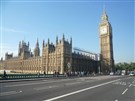On the eighth day of the bombardment of Gaza, the Israeli government agreed to sit down with the Hamas leadership and the Egyptian government to come up with a ceasefire agreement. Hamas and Egypt had called for a ceasefire from early into the conflict, but the Israelis had refused. An early Israeli draft indicated that they wanted Hamas to accept a fifteen-year hudna or truce, which would be tantamount to asking the Palestinians to accept their occupation without any resistance. When the escalated bombing did not break the will of the population of Gaza, and of the Hamas leadership, Israel agreed to much narrower ceasefire terms.
What did “Operation Pillar of Defense,” as the Israelis called it, accomplish for Tel Aviv? It certainly allowed the Israelis to test their missile defence shield (Iron Dome) and it allowed them to use their heavy weapons against the Palestinian population. But it did not change the political equation. Instead, Hamas comes out of this bombardment strengthened. The ceasefire agreement after Israel’s 2009 “Operation Cast Lead” insisted that aid go through the Palestinian Authority, which is run by Fatah, Hamas’ rival amongst the Palestinians. This time, there was no such stricture. Fatah’s Mahmoud Abbas has been weakened by his inability to call for even non-violent demonstrations in the West Bank, and he seemed a shill for the United States with his photo opportunity with U.S. Secretary of State Hillary Clinton. Strikingly, Abbas did not go to Gaza during the conflict. “Free people are not deterred,” Hamas’s leader Khalid Misha’l said in Cairo when the ceasefire was signed. “What has happened is a lesson that the people’s choice is the resistance,” which earned him plaudits in the Palestinian world.
Israel finds itself more isolated politically, which would have been made manifest by a U.N. Security Council rebuke had not the U.S. threatened to veto the Moroccan draft on at least two occasions. The ceasefire document not only did not earn Israel what it wanted, but suggests that Israel’s embargo of Gaza must be reconsidered (it calls for “opening the crossings and facilitating the movement of people and transfer of goods and refraining from restricting residents’ free movement and targeting residents in border areas”).
In his Cairo speech, Misha’l said, “The martyrs of the Egyptian revolution have their fingerprints on the [ceasefire] document.” It is certainly the case that this bombardment has revealed that however constrained Egypt might be, it is certainly not a client state of the U.S. (as it was under Mubarak). The restive Egyptian street came out in support of Gaza, as it had during the second intifada, and the governing Muslim Brotherhood, which has ties to Hamas, put immense pressure on the Egyptian government of Mohammed Morsi.
Morsi could have abrogated the Egyptian-Israeli peace treaty of 1979 as a way to put pressure on Israel to desist from its use of asymmetrical power against the Palestinians. But Morsi is not a radical; he was mocked on the Egyptian Street, he is constrained by his military’s ties to the U.S., and the neo-liberal economic agenda he is pursing (anchored by the new International Monetary Fund agreement). Nonetheless, Egypt has returned as a major regional actor, setting aside Iran and Syria as Hamas’s main external supporters.
Qatar’s Stance
Hamas’ political bureau was based in Damascus, Syria until Misha’l decided to break with the Syrian regime over its killing of civilians. Hamas decamped to Doha, Qatar, welcomed by the Emir who had himself taken a forward policy against Syria. The Emir of Qatar visited Gaza in October and pledged to support the territory with economic aid. But as Israel’s bombing began, the Qatari support seemed less valuable. Qatar was allowed to make statements about arming the Syrian rebels, a position that was endorsed by the U.S. tacitly, but it was not permitted to make similar statements about arming the Palestinian resistance. This has dented its reputation. Misha’l anemically thanked Iran for its logistical support, but pointedly noted that Hamas disagreed with Iran on Syria. The older, clearer lines of support that ran from Tehran through Damascus into the arsenal and arteries of Hamas are no longer as clear. Time will tell how Hamas, and the Palestinian resistance in general, will calibrate its links with these countries.
As the smoke clears in Gaza, it is clear that the destruction has been immense. After the last bombardment in 2009, the U.N. empanelled a commission to look into the conflict. The Goldstone Report was very critical of Israel. But none of its recommendations could be pursued, even though they intimate that Israel committed crimes against humanity (perhaps even war crimes). Nor was Israel enjoined to pay reparations for the destruction of civilian infrastructure. Such impunity against the occupied territories suggests that once more Israel will neither face scrutiny for the conduct of its war, nor will it have to consider the economic toll. Israel will go scot-free (in fact, the U.S. has promised to rearm Israel, including its missile defence shield). The Palestinians, meanwhile, will have to pick up the pieces, with aid from the U.N., the Arab states, and their own resilience. It is a testimony to the human spirit that the Palestinian people remain resilient and hopeful, looking beyond the last sky for a chance to live dignified lives.
[This article was originally published on The Hindu.]
![[Remains of a Gaza home hit by an Israeli air strike. Image by Scott Bobb. From Wikimedia Commons.]](https://kms.jadaliyya.com/Images/357x383xo/Gaza_house_destroyed_2.jpg)










